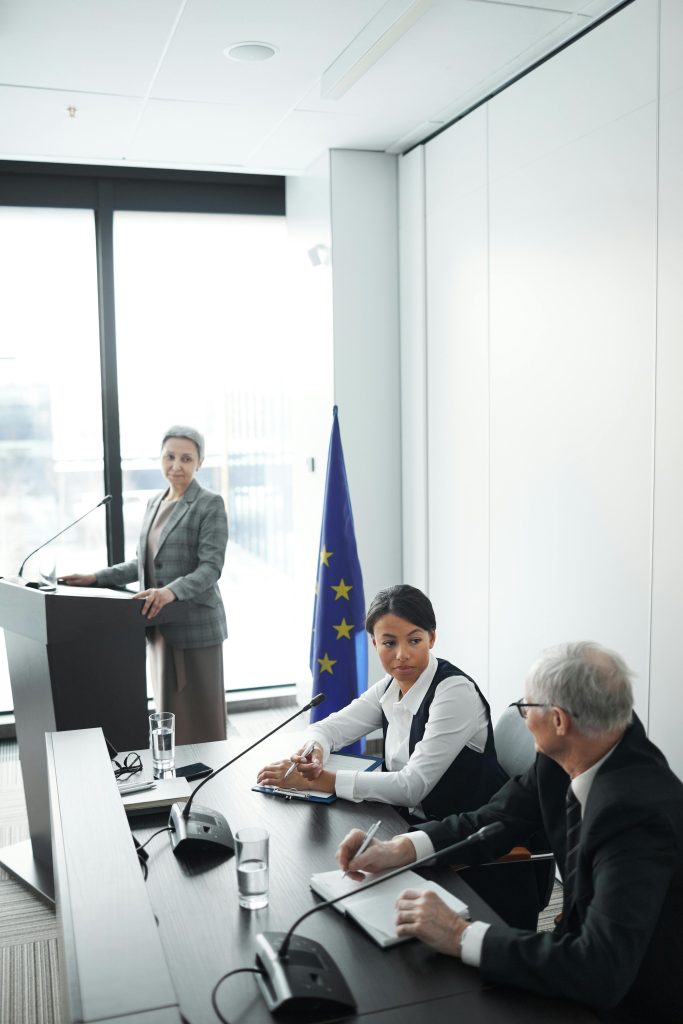Introduction
In an era where information travels at lightning speed, mastering strategic media relations is essential for organizations aiming to maintain a positive public image and effectively communicate their messages. Building and nurturing relationships with media professionals enables organizations to disseminate information accurately, manage crises proactively, and engage with their target audiences effectively.

Who Should Attend
CThe “Strategic Media Relations” course is designed for:
Business Leaders and Entrepreneurs: Executives and business owners looking to understand media dynamics to better represent their organizations.
Public Relations Professionals: Individuals responsible for managing an organization’s communication with the media and the public.
Corporate Communications Specialists: Those tasked with developing and implementing communication strategies within a corporate setting.
Marketing Professionals: Marketers seeking to enhance their media engagement skills to promote products or services effectively.
Nonprofit and Government Communicators: Communication officers in nonprofit organizations or government agencies aiming to improve public outreach and media interactions.Wikipedia
Latest Trends in Strategic Media Relations
The landscape of media relations is continually evolving, influenced by technological advancements, changing consumer behaviors, and the dynamic nature of the media industry. Key trends shaping strategic media relations include:
Integration of Digital Media Platforms
The rise of digital media has transformed how organizations interact with the public. Leveraging social media channels, blogs, and online news outlets has become integral to media strategies, allowing for real-time engagement and broader reach. Courses like “Media Relations: Present and Future” emphasize the importance of understanding these digital platforms to effectively craft and pitch stories. Wikipedia+2SPS NYU+2Wikipedia+2
Emphasis on Content Creation and Storytelling
Compelling storytelling remains at the heart of successful media relations. Organizations are focusing on creating authentic, engaging content that resonates with their audiences. This involves not only traditional press releases but also multimedia content such as videos, podcasts, and infographics. Programs like the Certificate in Strategic Media Communications highlight the need for practical public relations solutions that positively affect a company’s bottom line. SPS NYU
Data-Driven Decision Making
Utilizing data analytics to inform media strategies is becoming increasingly prevalent. By analyzing audience demographics, media consumption patterns, and engagement metrics, organizations can tailor their messages more effectively and choose the most appropriate channels for dissemination.
Crisis Communication Preparedness
In today’s fast-paced media environment, being prepared for potential crises is crucial. Developing comprehensive crisis communication plans and training spokespersons to handle media inquiries can mitigate negative publicity and maintain public trust. Courses such as “Media Relations” cover strategies for handling crisis situations and using new media effectively. static.scs.georgetown.edu
Building Relationships with Influencers
Beyond traditional journalists, influencers have become key players in the media landscape. Engaging with bloggers, social media personalities, and industry experts can amplify an organization’s message and reach niche audiences.
You may also be interested in other courses in the Business Strategic Communication
Learning Objectives
Upon completing this course, participants will be able to:
- Develop Comprehensive Media Strategies: Craft and implement media plans that align with organizational goals and effectively reach target audiences.
- Enhance Media Engagement Skills: Build and maintain relationships with journalists, influencers, and media outlets to facilitate positive coverage.
- Create Compelling Content: Produce engaging stories and multimedia content tailored to various media platforms.
- Utilize Digital Media Tools: Leverage social media and other digital channels for media outreach and audience engagement.
- Manage Crisis Communications: Develop and implement crisis communication plans to handle negative publicity effectively.
- Analyze Media Metrics: Use data analytics to assess the effectiveness of media strategies and make informed adjustments.

Outcome for the Course Sponsor
Organizations sponsoring participants in this course can expect:
Strengthened Media Relationships: Establishment of lasting relationships with key media figures and influencers.
Enhanced Media Presence: Improved ability to secure positive media coverage and manage public perception.
Proactive Crisis Management: Better preparedness to handle media crises, reducing potential reputational damage.
Strategic Content Creation: Development of high-quality, engaging content that resonates with target audiences.
Increased Audience Engagement: More effective use of digital media platforms to connect with and grow the organization’s audience.USC Web App
Data-Driven Communication Strategies: Utilization of analytics to inform media relations decisions and measure success.









